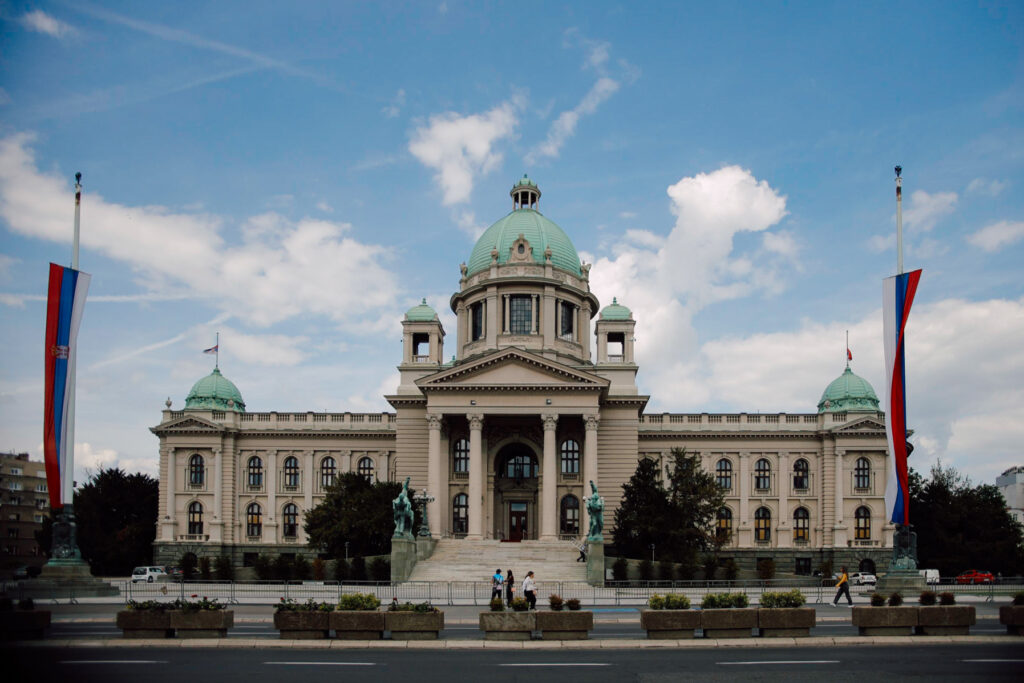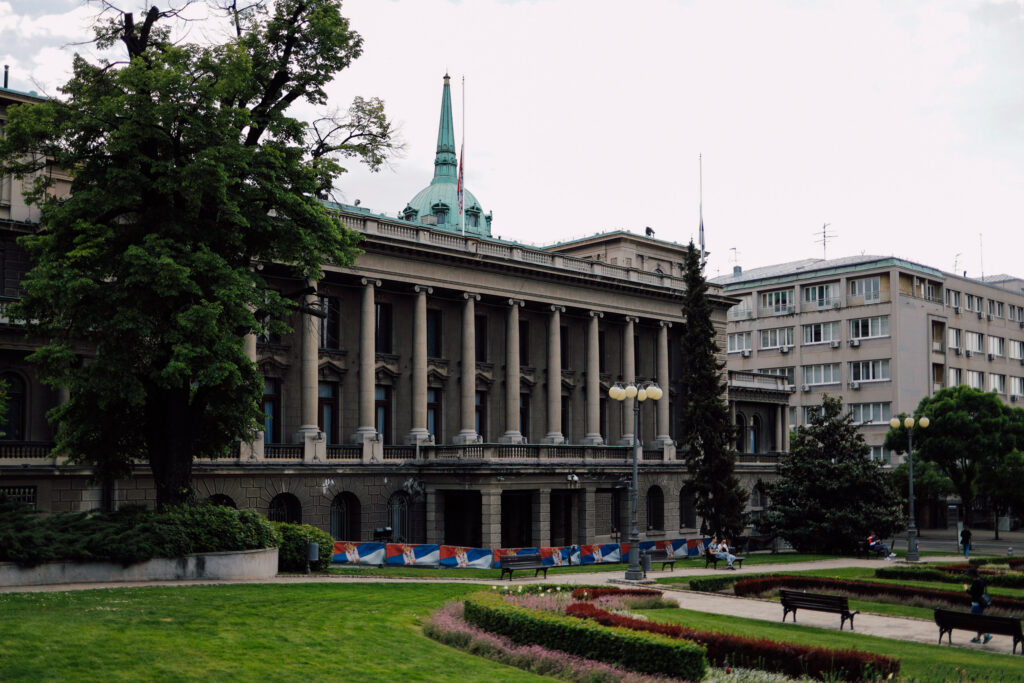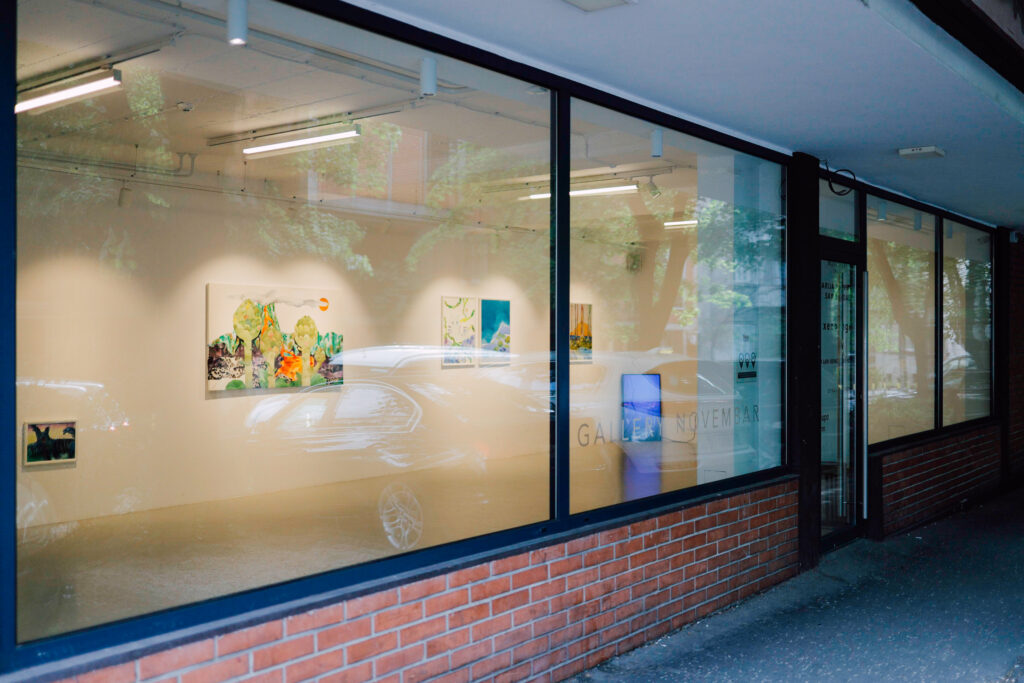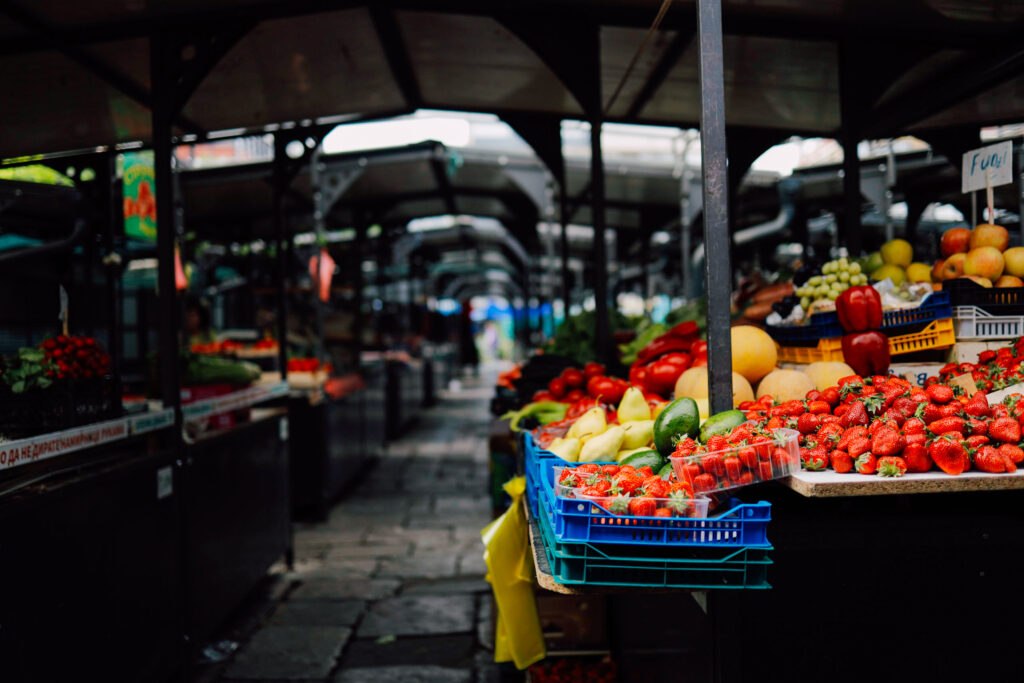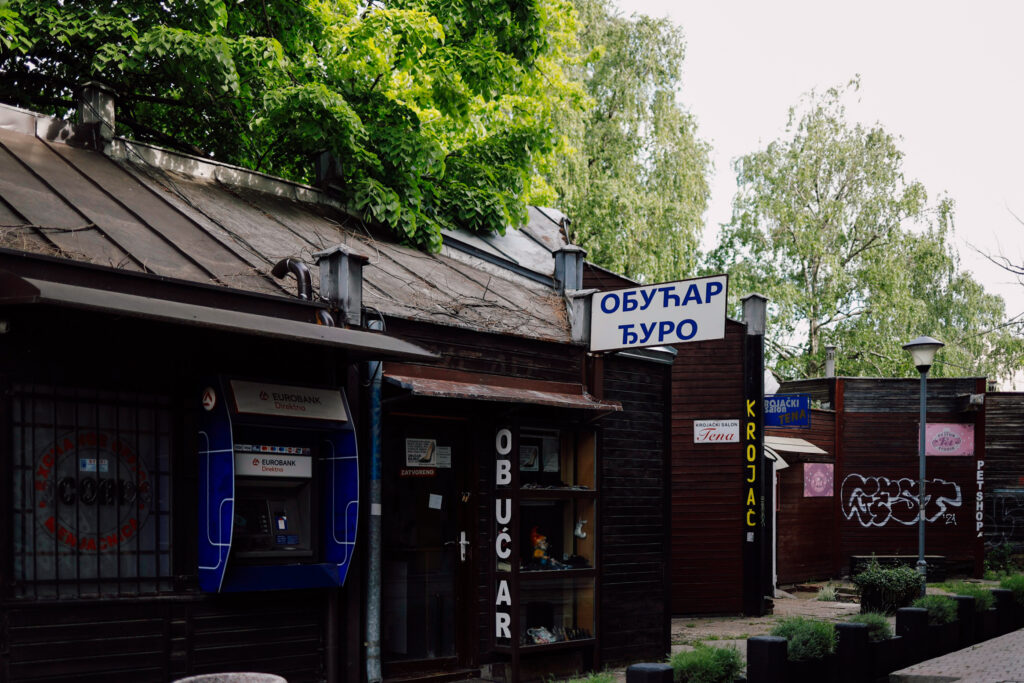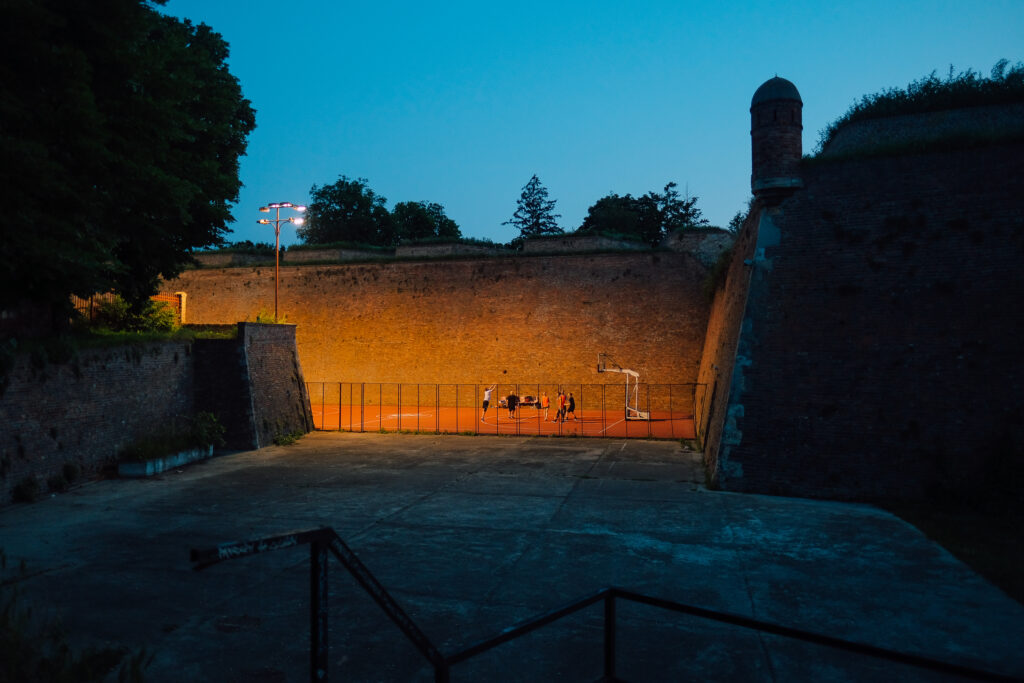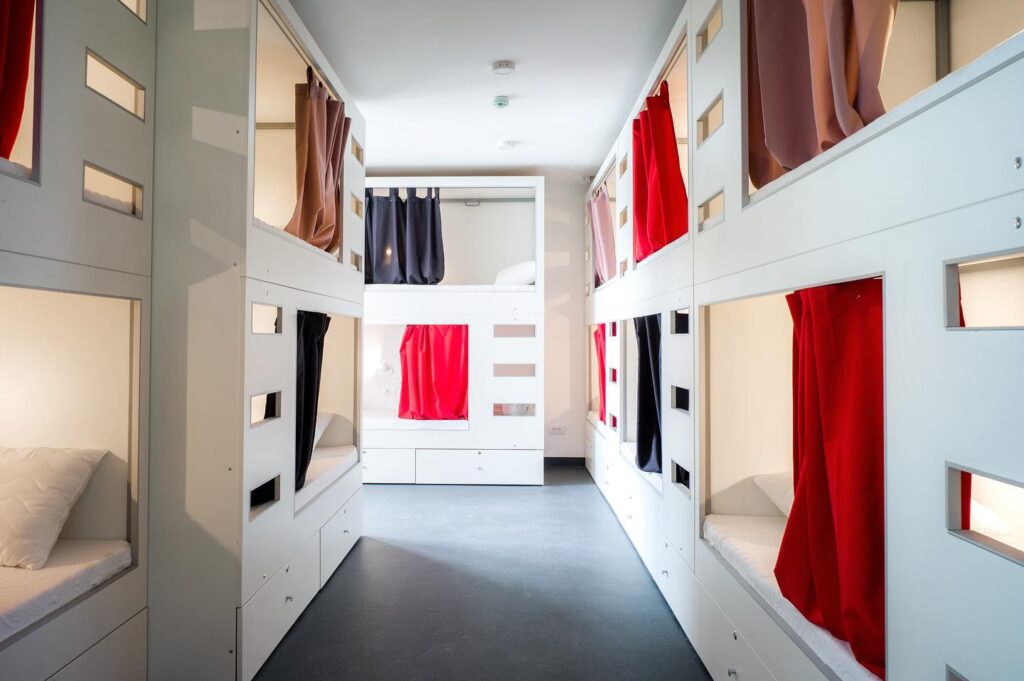A walk through Vrachar Belgrade of the twentieth century: from Pioneers’ Park to the Church of St. Sava
Words: Ekaterina Tolkacheva
Photos: Konstantin Kondrukhov
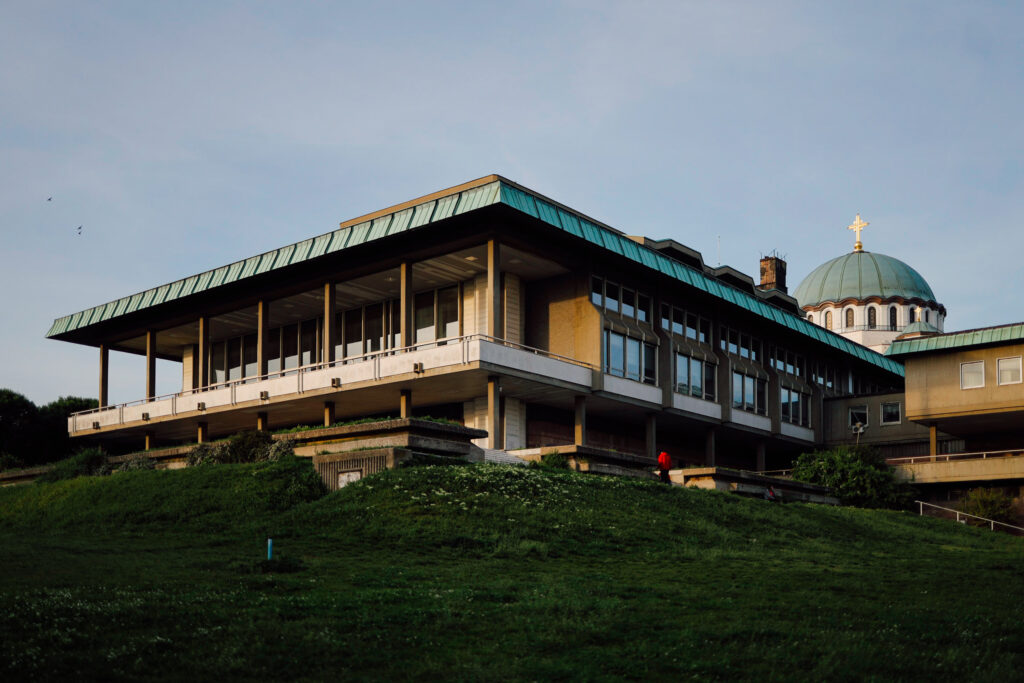
The historical part of the Vračar was built up at the end of the 19th century and during the Interwar period. Modernist and neoclassical facades of houses will help us to imagine beauty standards of wealthy townspeople, who lived here a hundred years ago. It is convenient to start a walk around the Vračar area from the city center, gradually moving away from the streets saturated with attractions towards the depth of that pretty area.
Pioneers’ park (Pionirski park), with its pedestrian paths, benches and a playground, is located in the very center of the political life of Belgrade. The facade of the Parliament building – the National Assembly of the Republic of Serbia (Nikola Pašić Square, 13) is just in front of the park. And on the opposite side there are the buildings of the Old Palace (Stari Dvor) and the New palace (Novi Dvor). These are the royal palaces of the two dynasties – the Karageorgevich and the Obrenovich, who were rivals for the crown of Serbia during the 19th century.
Until the Communist Party came to power, the Pioneers’ Park had been a part of the Royal garden. The Communists not only made it available for the public, but also changed the layout so that the park was turned not to the palaces, but to the Parliament. Nowadays Stari Dvor houses the City Assembly of Belgrade, while Novi Dvor is the residence of the President of Serbia, so political rallies and processions often start from the park. The Boulevard of King Alexander begins from that corner of the park where the landscape monument “Stones from the top of Kaimakchalan ” is located (it was created in honor of an important victory of the Serbian army during the First World War). The boulevard changed its name several times, during the 20th century it was known as The Boulevard of Liberation and The Boulevard of the Revolution. The street received its modern name in honor of the last king from the Obrenovich dynasty, who was overthrown and killed in 1903.
The road was laid here in the time of the Roman Empire. It led from Singidunum (the name of Belgrade then) to Constantinople (modern Istanbul). Since the 19th century, when the city began to grow in new areas, this street has become a place of active development of trade. The oldest resident of the street – Pelivan confectionery – has been working since the 1940s at the very beginning of the boulevard on its right side. The first building on the left side is the impressive Main post office, which faces the Boulevard with the side facade. A little further along the boulevard there is Tashmaydan Park (Tašmajdan). Since the time of the ancient Romans there was a quarry here, which remained active during the Turkish rule. The complex system of underground voids, formed due to the extraction of stone, was used in the First and Second World War as shelter and as a ware of ammunition. The high cathedral at the beginning of the park, the Church of St. Mark, was built in the 1930s.

The park stretches along the boulevard up to Belgrade (Beogradska) street. Behind the cross-road there is a modernist building of the Faculty of Law of the Belgrade University and the Metropol Hotel (Bulevar Kralja Alexandra, 69). Initially, the Metropol building was designed as the largest congress center in the Balkans, which was to be built by volunteer youth workers of socialist Yugoslavia. But the construction did not work out, the concept was revised, and in 1957 the most elite hotel of the socialist Belgrade was opened.
If you turn right at Beogradska street and at the next intersection – left to Krunska street, you will suddenly find yourself surrounded by pretty villas. This area began to be settled by wealthy Belgradians in the 20th century. In one of the mansions – in the house of George Genchich – there is the museum of famous scientist Nikola Tesla (Krunska, 51). The museum preserves personal belongings, photo documents and manuscripts of the inventor, which were transferred to Belgrade from the United States by his nephew Sava Kosanovich. There are not many exhibits in the hall: basically these are models showing the essence of Tesla’s discoveries, and an urn with his ashes.
Not far from the museum, on the corner of Krunska and King Milutin, you can make a stop in the Kultura Bar (Kralja Milutina, 4) – the first bar of Belgrade, whose creators placed a bet on customized cocktails.
You can reach the Kalenich market (Kalenić pijaca) by Krunska street. That is the largest farmers’ market in Belgrade. It was built in 1926 on a site, which was donated to the city by Vlaiko Kalenich, a rich man and a philanthropist. In addition to shelves with farm products there are several rows of flea markets. There are narrow streets, leading from the Kalenich market to the temple of St. Sava. There is the Novembar Gallery in one of them (Kursulina street, 22). Exhibitions of young authors who like to experiment at the nexus of art, science and technology take place there.
The Church of St. Sava is considered to be the largest Orthodox church in the Balkans. Its height is 78 meters – 25 meters lower than the Cathedral of Christ the Savior in Moscow. The construction of the church lasted from 1935 to 2018 and was constantly interrupted due to wars and changes of the political system. We strongly recommend to see the church from the inside: the internal space, designed for 10,000 people, is impressive with its volume.
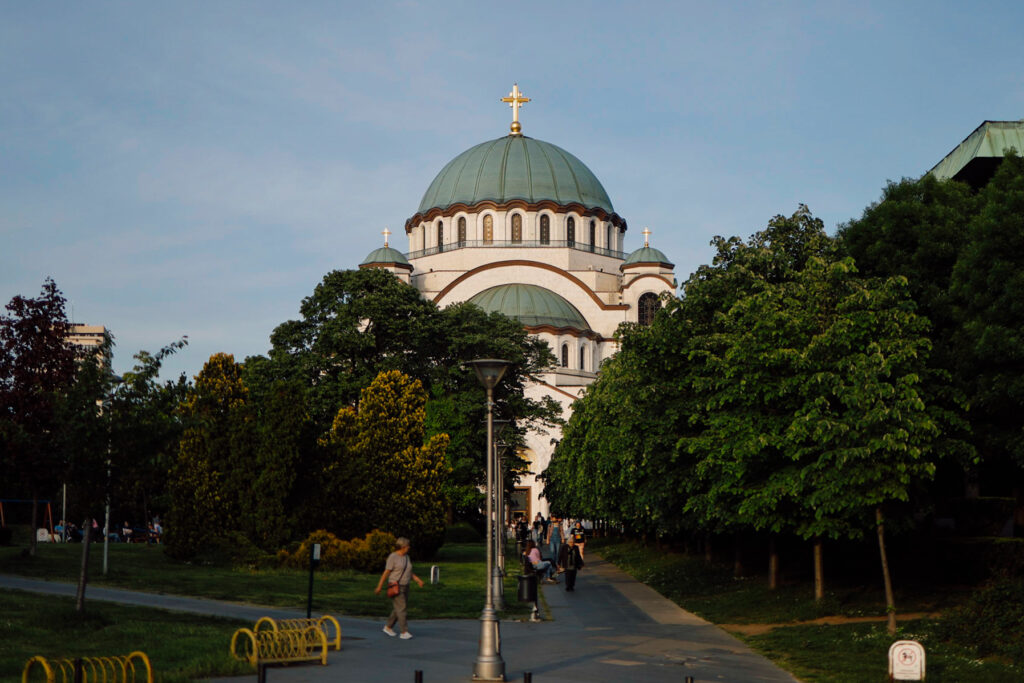
Near the temple, on the Svetosavsky plateau (Svetosavski Plato) there is the National Library of Serbia (Skerlićeva street, 1), the monument to Karageorgy (the leader of the Serbian uprising against the Ottoman rule in 1804 – 1813) and the park named after him. If you leave the beaten tourist path and go along narrow streets behind the church, then in a few quarters from the Svetosavski Plato, on the intersection of Tsar Nicholas II (Cara Nikolaja Drugog) and Chuburska (Čuburska), you can see a monument of another time: wooden one-story workshops of the Crafts Center built in the 1960s according to the project of the architect Ranko Radovich in the shape of honeycomb. It was an island of private business in a socialist country, where shoemakers were adjacent to glassblowers and hairdressers. Citizens named the location “Gradić Pajton ” – Python City, in honor of the well-known series of the same name, which was then broadcasted in Yugoslavia. Nowadays there is very little left of the Gradić Pajton: an antique store, the Čubura restaurant, faded jazz club posters and a few more selling spots. Nevertheless, the locals and descendants of the artisans did not let the municipal authorities of Vračar to demolish the dilapidated buildings, insisting that they could give them new meanings.
